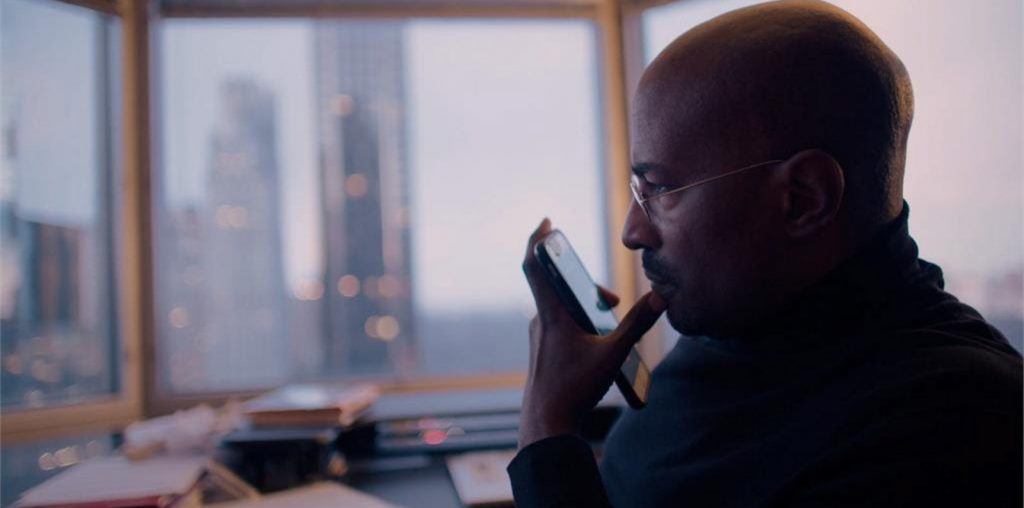
Imagine if Marilyn Manson was less concerned with playing dress-up than he was with being the brilliant, subversive artist he could be. Better yet, imagine if the so-called “shock rocker” really shocked us the way he thinks he does, uptight Christian conservatives notwithstanding. Imagine these things times a thousand (maybe a million?) and you begin to approximate Reverend Steven Johnson Leyba. Artist, madman, Native American, Satanist, sexpressionist, provocateur, and all-around fly guy, Rev. Leyba is many things to, well, a few people at least, but a bore is definitely not one of them. Let’s face it, an expose on someone like me for instance, though surely provocative in its own right, would pall in comparison to Marc Rokoff’s eye-opening/closing (emphasis on slash) “Unspeakable: The Life and Art of Reverand Steven Johnson Leyba.” Not since “Myra Breckinridge” has a film left me so conflicted, a mess of reactions ranging from outrage to intellectual stimulation to downright confusion. More than anything else though, “Unspeakable” was a direct assault on my so-called infinite liberal mindedness, which I could only salvage (barely) by repeating the Hans Suyin quote, “Moralists have no place in an art museum” over and over again. And then that old Nietschze chestnut, “There are no moral phenomena at all, but only a moral interpretation of phenomena.” fought for its place at the bar in my spinning head. Believe me, “Sweet Dreams” never had this effect on me.
If you’ve never heard of the guy, here’s a little primer: Rev. Leyba is a legally ordained Priest of the Church of Satan and a man deeply proud of his Native American ancestry. He is apparently known in the (waaaaaay) underground art world as the “Father of Sexpressionism.” He also views every kind of bodily excretion as a viable medium for artistic _expression. Yes, even THAT kind. If you’re thinking this sounds like one peculiar cat, well you’d be right. Hell, even his wife thinks the guy’s a freak when he shows up naked and bloodied after a night of dumpster diving for strange women’s panties. His “peers” are not much better, particularly the bohemian hipoisie of NYC’s East Village, who shunned him like yesterday’s Matthew Barney the moment he revealed his Satanic “agenda” in his art. But to easily dismiss Leyba as an outright loon, which is tempting, is to also dismiss his undeniably striking and passionate body of work. Leyba’s paintings are alternately revolting, offensive, and dangerous, depending on your tastes, but they also reverberate with a rare, dark beauty. “Unspeakable” is ultimately a portrait of a true artist and his intensely personal vision.
Aside from disturbing us with its graphic images of self-mutilation and some unpleasant business with a whiskey bottle (known affectionately as the Apache Whiskey Rite), “Unspeakable” forces the viewer to re-examine even his/her most liberal views of art, the nature of man, and Satanism. (Rokoff to Leyba’s uncle: Is this art to you? Uncle: What do you mean by art?) Illustrious guests (at least in Satanist circles), including High Priestess Blanche Barton, Tom of Finland President Durk Dehner, and noted anthropologist Charles Gatewood, lend the proceedings an air of scholarly gravitas. Barton, for instance, speaks to the popular misconceptions of Satanism, which, if I understand correctly, is really a celebration of the dark, rebellious spirit in every human being and not necessarily the artistic (or is it ritualistic?) use of say, used, gilded tampons with painted-on swastikas.
If films were based solely on shock value, “Unspeakable” would be a masterpiece of sorts, even to this self-professed jaded critic. Rokoff spares us nothing, exposing Rev. Leyba in all his self-mutilating, deviant glory. For showing me things I’ve certainly never seen before and doing so in an intelligent, even mildly skeptical fashion, I am grateful to the filmmaker. However, I was also somewhat disappointed by Rokoff’s obvious timidity or perhaps reluctance to ask much-needed questions like: What does the swastika actually mean to you, Rev. Leyba, who wants so badly to reclaim it as an ancient Native American symbol?, or “Do Satanists actually believe in a being called Satan?, or And you make money doing this?!?!?!?!? Maybe the answers to these questions are obvious to some, but to most I’d say not. Given the nature of the subject matter, we needed at least a modest counter-balance.
(Apparently, H.R. Giger is looking for a copy of this film. If you happen to see him, tell him he can have mine. One time was plenty, thank you.)
